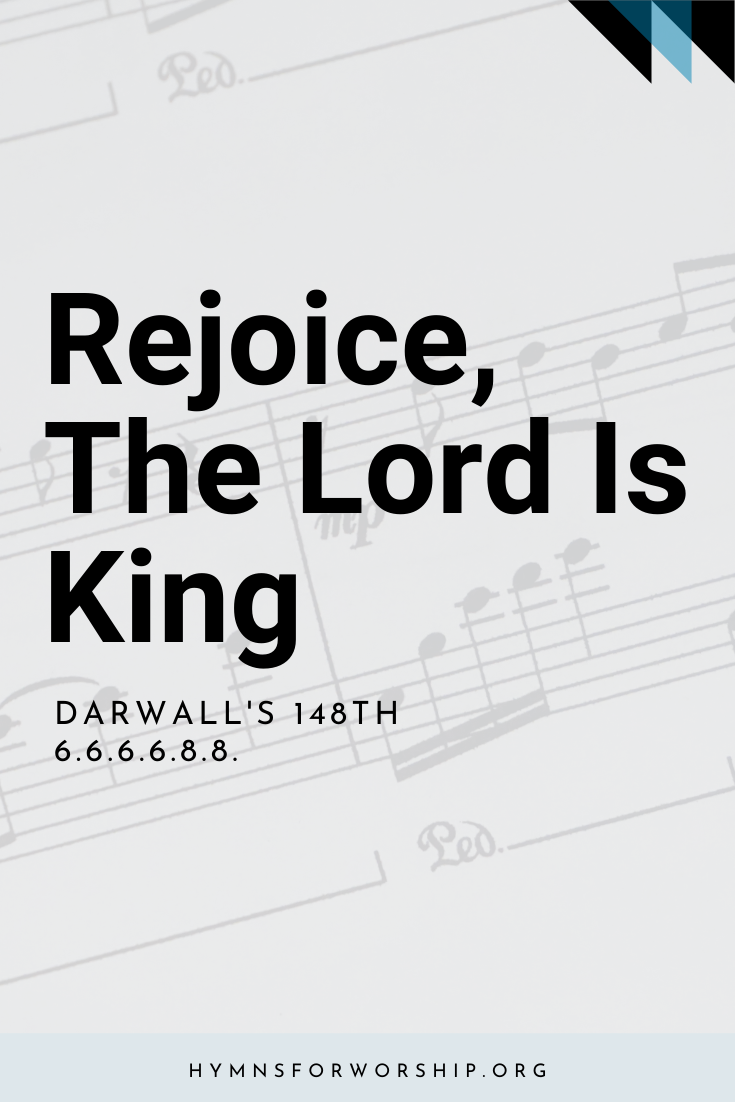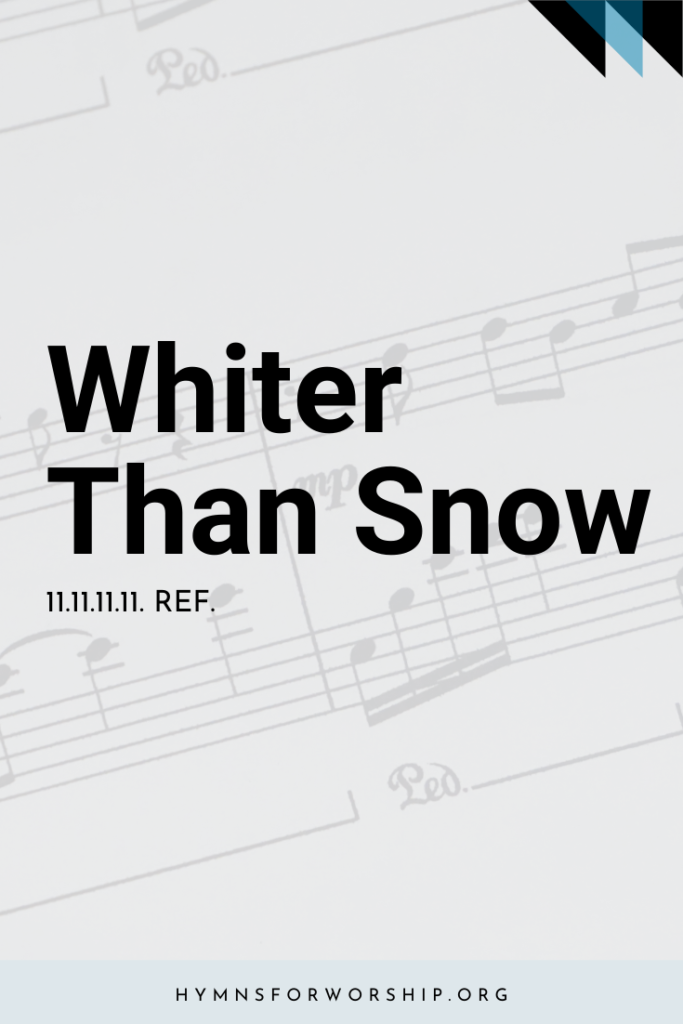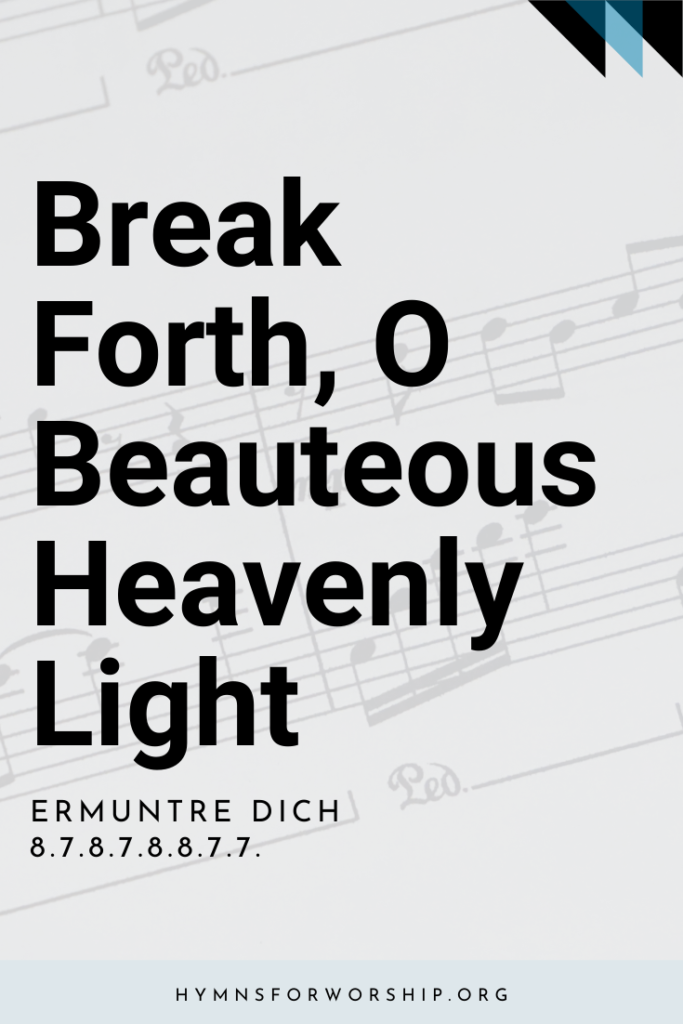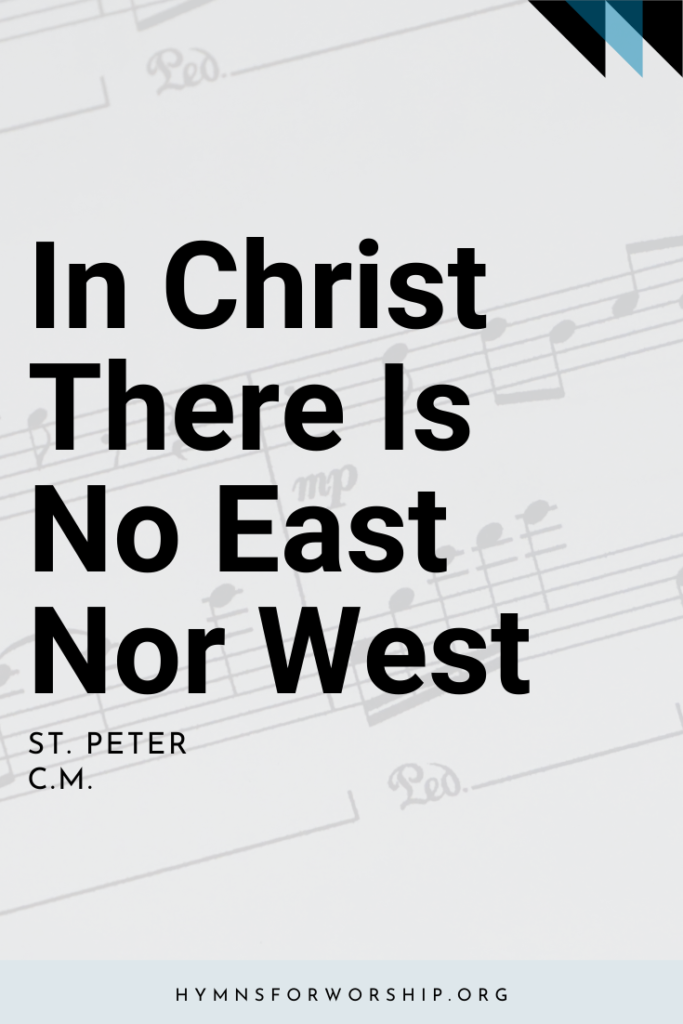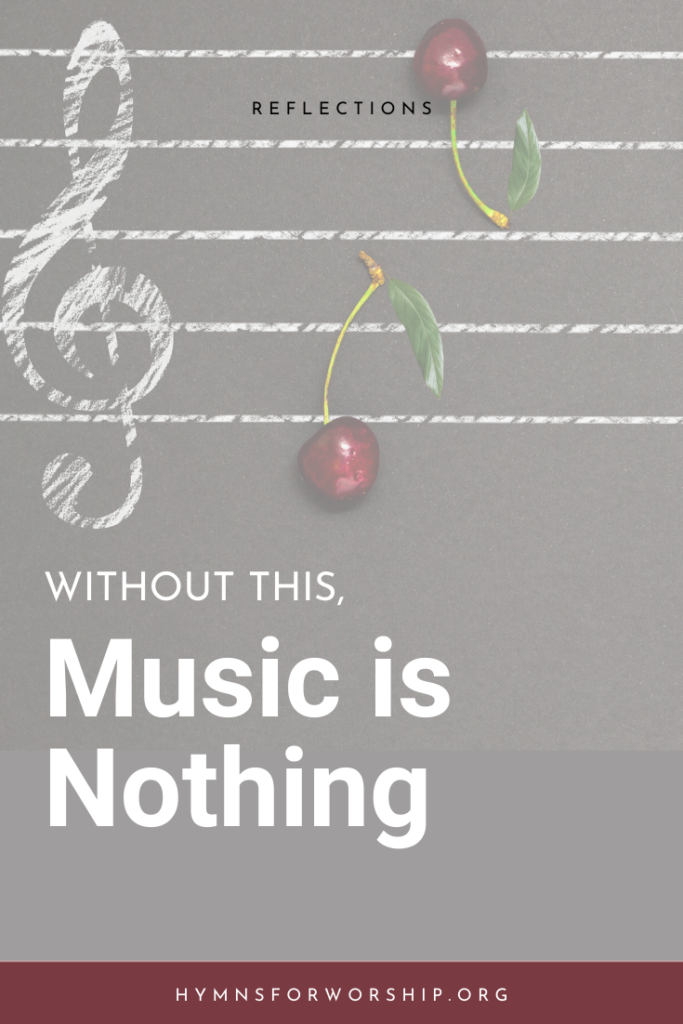JESUS CHRIST >> SECOND ADVENT
SDAH 221
Rejoice, the Lord is King! Your Lord and King adore!
Rejoice, give thanks, and sing and triumph evermore
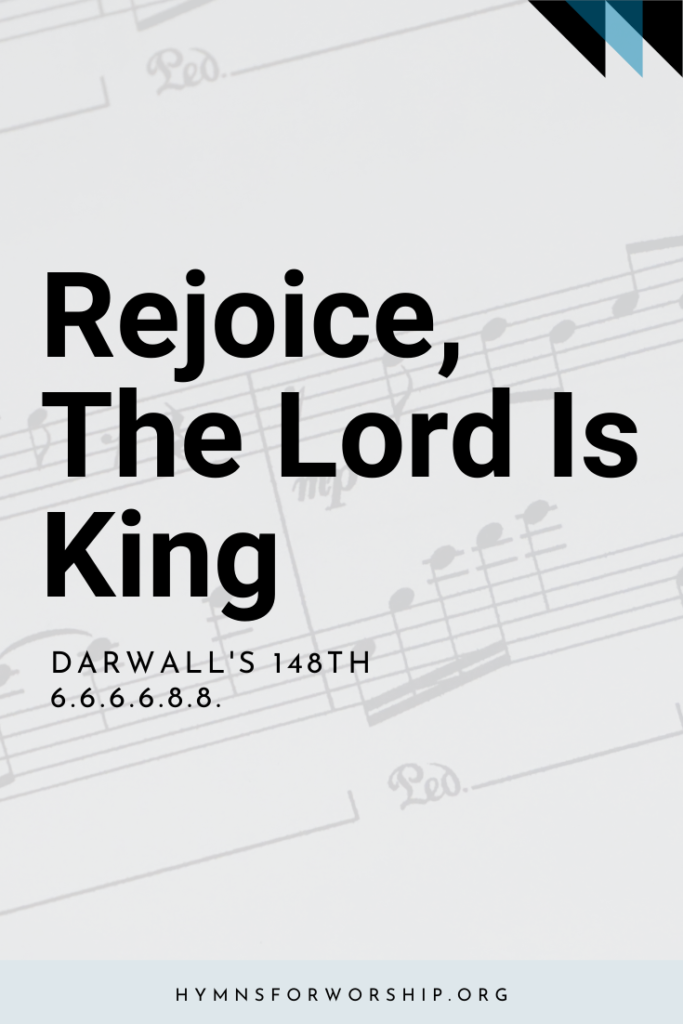

Text
1
Rejoice, the Lord is King! Your Lord and King adore!
Rejoice, give thanks, and sing and triumph evermore
Lift up your heart, lift up your voice!
Rejoice, again I say, rejoice!
2
Jesus, the Savior, reigns, The God of truth and love;
When He had purged our stains, He took His seat above
Lift up your heart, lift up your voice!
Rejoice, again I say, rejoice!
3
His kingdom cannot fail, He rules o’er earth and heaven
The keys of death and grave Are to our Jesus given
Lift up your heart, lift up your voice!
Rejoice, again I say, rejoice!
4
Rejoice in glorious hope! Our Lord the judge shall come,
And take His servants up To their eternal home
Lift up your heart, lift up your voice!
Rejoice, again I say, rejoice!

Hymn Info
Biblical Reference
(a) Ps 97:1; Phil 4:4 (b) Rev 3:21 (c) Rev 1:18 (d) 2 Tim 4:1
Author
Charles Wesley (1707-1788)
Hymn Tune
DARWALL’S 148TH
Metrical Number
6.6.6.6.8.8.
Composer
John Darwall (1731-1789)
Theme
SECOND ADVENT
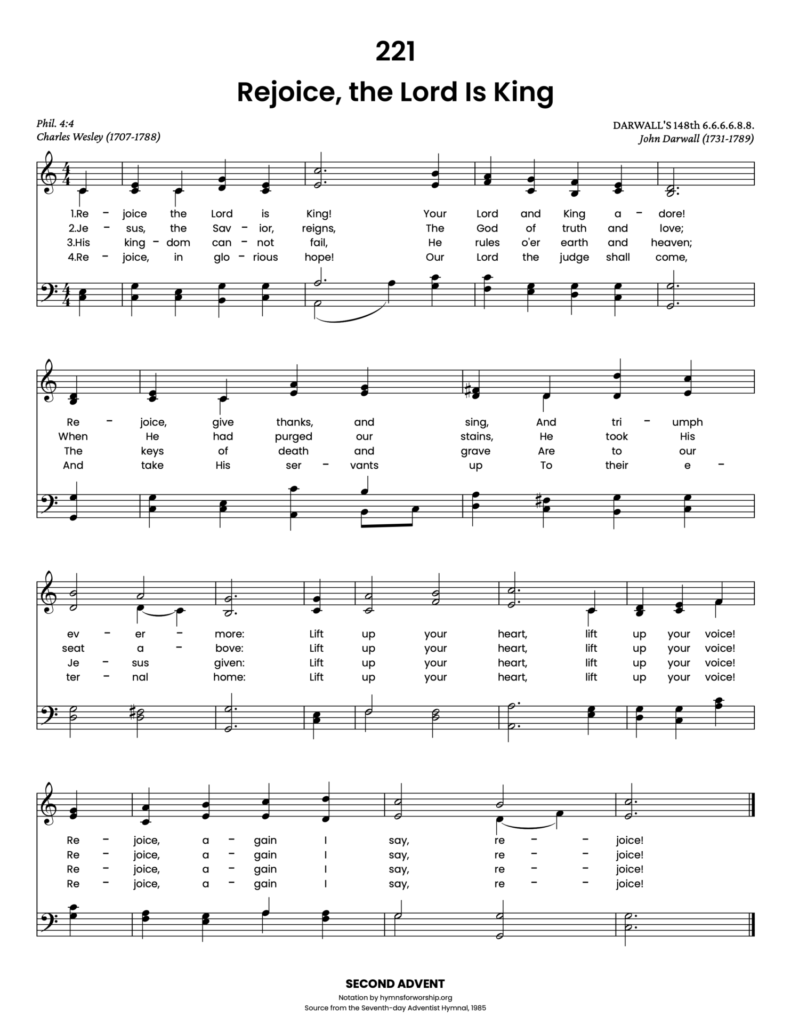
Get the hymn sheet in other keys here
Recommended Reading
Charles was the other Wesley. Alongside his brother John who was considered the main guy behind the founding of Methodism, it was Charles’ hymns that pushed through the envelope of being “just another religion.” His lasting and well-known hymns have captivated Christians all around the world. Through his poetic lines, we are able to sing many hymns with such deep theology.
It was said that he wrote 8,989 hymns. That’s 10 lines of poetry every single day for 50 years. And we are privileged to have sung some of those hymns. Tell me, don’t these hymns ring a bell for you?

Notes
Make each hymn more meaningful with these helpful tools: Short, ready-to-use hymn introductions for church bulletins, multiple ways to introduce a hymn based on your worship theme and in-depth history and insights to enrich your song service.
Let us lift up our hearts, lift our voices and sing. From one Sabbath to another Sabbath throughout all eternity, all who will be in the new heavens and the new earth will rejoice because Jesus Christ our Lord is King. (Lesson 13, 1st Quarter 2021 -Thursday, So Shall Your Seed and Your Name Remain, 3/25/2021)
Lift up your heart. Lift us your voice. Yes, be ye lifted up above all people because Jesus Christ the Lord is your king. (Lesson 6, 2nd Quarter 2021 -Sunday, Above All Else, 5/2/2021)

